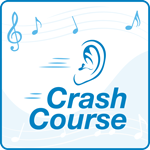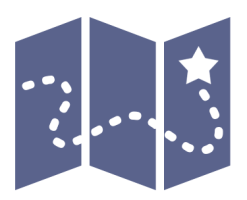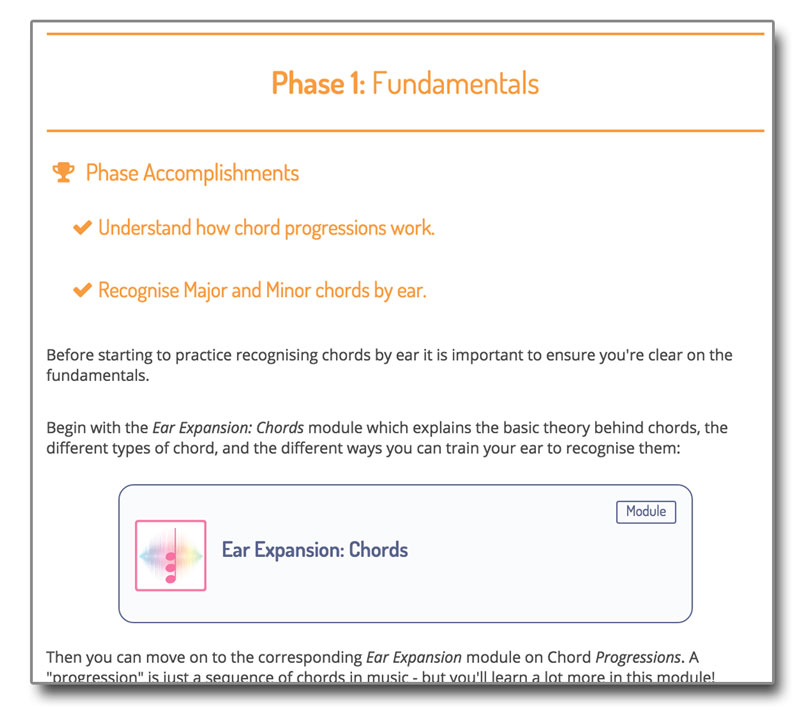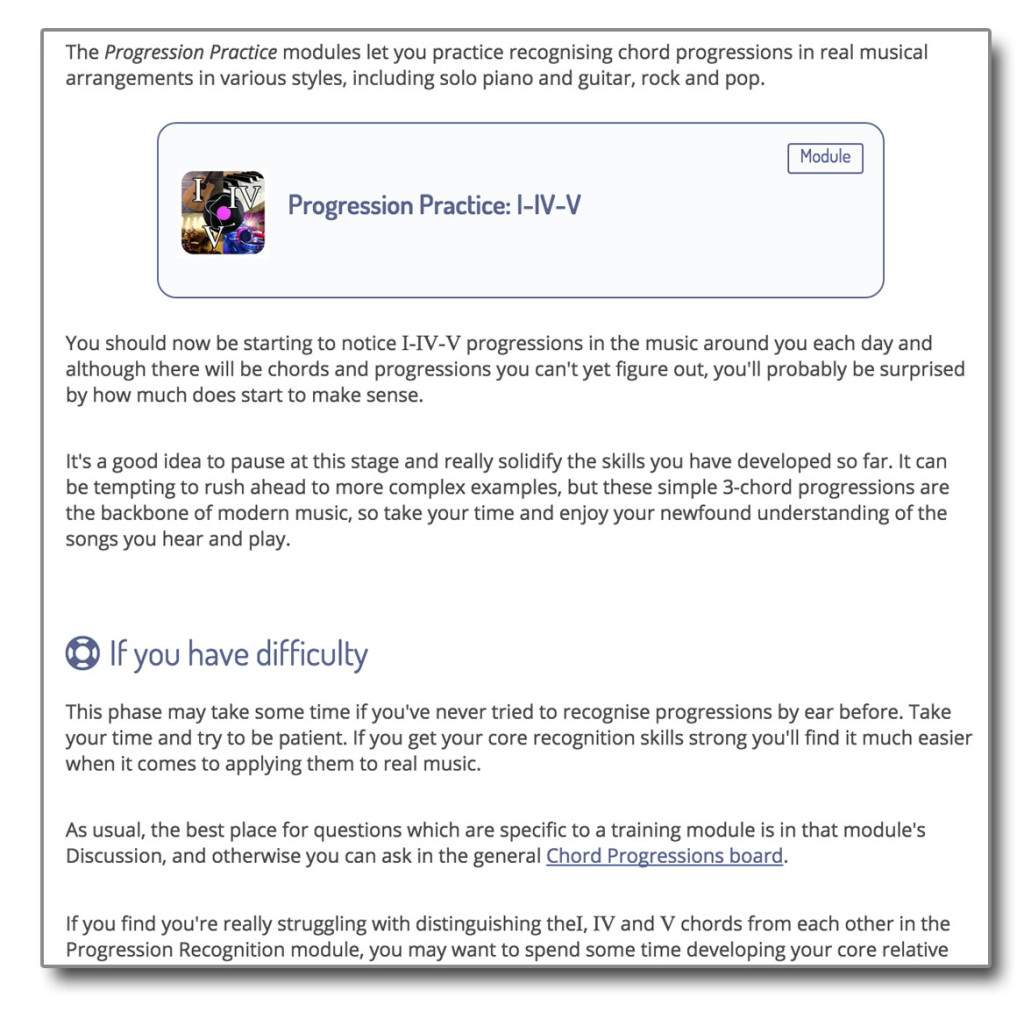It’s vital to have a plan for your musical training. As the old saying goes, “failing to plan is planning to fail”. This is one of the 3 Major Pitfalls that trip musicians up: to dive in and start training without really having a clear plan of what they hope to accomplish or how. This normally leads to frustration and disappointment, even in the most determined musicians.
But it’s not as simple as saying “Okay, I’ll make a plan.”
Even if you accept that you need a plan, it’s easy to quickly hit another problem: how exactly do you create that plan? Particularly when you’re just starting out, you might feel you don’t yet know enough to even figure out what should be in the plan.
That’s a frustrating situation to be in.
So how do you go from deciding to train your ears to having a well-thought-out training plan that’s going to be effective for helping you reach your musical potential?
You need the missing piece.
If you don’t have a plan and feel you can’t make one, you probably lack a Roadmap.

A Roadmap for your ears
As we’ve covered here on the site before, anyone who offers a one-size-fits-all music training course is promising disappointment, especially when it comes to ear training. The only thing which works reliably is a training system which is flexible to the student, letting them have a personal training plan that matches their own abilities and goals, and can adapt to their progress along the way.
At the same time, it’s true that there are some commonalities in terms of the skills musicians want to learn and the effective ways to learn those skills, so it’s not necessary for each person to start completely from scratch in creating their plan.
 Over at Musical U we’ve been working on a way to keep the flexibility of personalised training plans while providing our members with useful guidance of this kind, so that it’s easy for them to create training plans even when starting from the very beginning. This week we introduced what we think will be the solution: Roadmaps.
Over at Musical U we’ve been working on a way to keep the flexibility of personalised training plans while providing our members with useful guidance of this kind, so that it’s easy for them to create training plans even when starting from the very beginning. This week we introduced what we think will be the solution: Roadmaps.
Before we talk about what a musical training Roadmap is and how it helps you, let’s look at a couple of examples where the lack of a Roadmap caused problems – you might find they sound familiar…
Moving fast – in all the wrong directions
There are hundreds of articles, tutorials and training resources here on EasyEarTraining.com, and we’ve found that one of the biggest hurdles students typically hit with ear training is to dive in (e.g. practising interval exercises) without understanding the bigger picture and planning their training to meet their musical goals.
As a result they get bored or frustrated, and give up.
We’d hear from musicians who’d got off to a great and enthusiastic start, made good progress, and then stalled out. And they didn’t have any way to get going again. This happened mostly because they lacked the fundamentals. They didn’t understand the “big picture” of ear training, they hadn’t figured out why it really mattered to their musical life. It was just a thing they tried out. So when they lost momentum there was nothing to help them keep going.
 When we created our free Ear Training Crash Course it was tempting to fill it with exercises: lots of things to do. Get people started with intervals, chords, progressions, and so on.
When we created our free Ear Training Crash Course it was tempting to fill it with exercises: lots of things to do. Get people started with intervals, chords, progressions, and so on.
But we knew that would actually do our students more harm than good.
Instead we designed it to give you a clear sense of how ear training will help you, which topics to pursue, and then provide suggestions of resources you can use once you’re ready to begin actively training.
This has definitely helped Crash Course students get off to a more solid start with their training than those who just dive in blindly. We’ve provided a kind of roadmap for the whole area of “ear training”.
This works well for a certain category of musicians – but actually it’s not quite right for everybody, and there weren’t clear next steps for someone who had a more specific goal like “play chords by ear”. That’s why we created the Course Finder, providing one more step towards their personal training plan.
With the Course Finder we feel we now have a way to help new students get quickly onto an effective path to their goal.
But we were surprised to find this same challenge crop up somewhere else. Somewhere we thought we’d already solved this problem…
A Bit Too Personal
 When we launched Musical U back in April the team was excited about how flexible the training system was. Finally there was a way to provide all the resources musicians need, along with personal help and support, in a system that could perfectly suit their abilities and goals.
When we launched Musical U back in April the team was excited about how flexible the training system was. Finally there was a way to provide all the resources musicians need, along with personal help and support, in a system that could perfectly suit their abilities and goals.
And it worked!
Sort of.
What we found was that there was just too big a knowledge gap between setting goals, and creating a training plan. Musical U members could use the Musicality Status Check and Planning For Success modules to get a clear picture of their starting point and destination – but then it wasn’t always easy for them to connect the dots.
Fortunately, because Musical U provides personal support and guidance to each member, we were able to step in and help members create their training plans each time and make sure they could get off to a good start.
That’s something we’ll be continuing to offer, but at the same time it didn’t feel quite right. As much as possible, we want to empower Musical U members to make their own choices and give them all the information and guidance they need to plan and adapt their training independently.
So we’ve been working on a way to provide more guidance without going down the unhelpful path of dictating set “courses” and paths which members must follow.
The result is our new “Roadmaps” feature, launched this week.
A Musical Roadmap
 Just like when you’re planning a car trip, a Roadmap for your musical training is designed to give you the “big picture” of the journey ahead. It allows you to get a sense of the landscape and the different options available to you, so that you can then create your own plan for the journey.
Just like when you’re planning a car trip, a Roadmap for your musical training is designed to give you the “big picture” of the journey ahead. It allows you to get a sense of the landscape and the different options available to you, so that you can then create your own plan for the journey.
A Roadmap is designed to answer three questions:
- Where am I?
- Where do I want to go?
- How will I get there
First of all, it helps you get totally clear on your starting point. Just like with a car trip, there’s no point having a detailed plan for the journey if it doesn’t start from where you’ll actually be starting from! With the Roadmap you can make sure you’re taking advantage of any skills you already have, and not skipping any vital fundamentals.
In Musical U we have another tool to help with this, the Musicality Status Check, which gives you a 360 degree picture of your musicality so that you know which skills you already have and which you’d like to develop. This helps you pinpoint which Roadmap to use and where in the Roadmap you should start from.
A Roadmap also lets you see where you’re going. This is almost as important as knowing where you’re starting from! As the Cheshire Cat explained to Alice:
‘Would you tell me, please, which way I ought to go from here?’ asked Alice.
‘That depends a good deal on where you want to get to,’ said the Cat.
‘I don’t much care where —’ said Alice.
‘Then it doesn’t matter which way you go,’ said the Cat.
If you want to see real results in your musical training you must set clear, effective goals (here’s a tutorial) which closely match what you’re truly excited about achieving in your musical life. The kind of goals that spark a fire of inspiration in you each time you work towards them. With a Roadmap you can check that your goal matches up with the journey you’re planning and see how far away it might be. It also gives you a way to connect with other musicians pursuing the same goal and using the same Roadmap. Even if their training plan ends up being quite different to yours, you share the same exciting destination.
Finally, a Roadmap lets you see how you’ll reach that goal. It isn’t a training plan in itself, but it has enough detail for you to easily start creating your 6-week plans. You can easily see which parts are relevant to you, which seem most appealing and useful for your musical life, and any time you’re unsure of the next steps for your training plan you can take a look and get a clear sense of your current location and the options to explore next.
Here are a couple of short excerpts from the “Play Chords By Ear” roadmap, to give you an idea:
From Phase 2:
These Roadmaps aren’t short. It might take you years to learn everything covered by a single Roadmap. Our first Roadmap, for Playing Chords By Ear, would be several pages long if you printed it out. Roadmaps are designed to take you from the basics right through to having an impressive musical ability.
At Musical U we’ll still be recommending our members create Training Plans for 6 weeks at a time and providing them full personal support throughout their training. But we hope the addition of these new Roadmaps will help provide a clearer sense of the overall journey ahead and empower them to plan training which is exciting, effective, and perfectly matched to them.
If you’re developing your musical ears, do you have a Roadmap? If not, ask your teacher or course provider what their Roadmap for you is. And if you’ve identified with the challenges discussed here and excited by the idea of having a clear and effective roadmap for your musical training, head on over to Musical U and we’ll be very happy to help.










